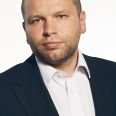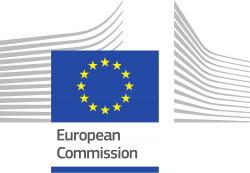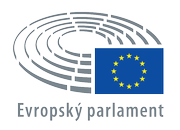Transport and mobility
It is the mobility of goods and people that has transformed the world economy and globalized trade. Mobility has changed lifestyles and is shaping the existence of billions of urban dwellers.
Urban transport networks form backbones of Cities linking their essential elements to each other. While there are more and more people living in the urban areas, sustainable mobility becomes one of the main city-related challenges to overcome. Thanks to improvements in energy-saving industrial techniques, nuclear power generation and energy substitution (particularly through renewables), total GHG emissions in European cities are reducing. On the contrary, GHG emissions from transport have increased over the last few years mainly due to the increase in road traffic which was not offset by improvements in the energy efficiency of engines and fleet renewals.
These impacts are not obvious only globally via GHG emissions but also in high-density urban areas via traffic congestion, space consumption, noise pollution, pollutant emissions, waste of time, etc. Moreover, one can see the proliferation of modes of transport and a quest for integrated multimodal system. Whether it is urban or peri-urban travel, citizens are moving more, and their needs are increasingly varied.
Therefore, the EU came with the promotion of new sustainable transport and mobility services via the Sustainable and Smart Mobility Strategy seeking a considerable reduction of negative impacts of transport and mobility in the next 30 years through a large initial set of interlinked and mutually supportive 82 actions focused on placing users first and providing them with more affordable, accessible, healthier and cleaner alternatives while reviving one of the sectors which has been hit hardest by the coronavirus pandemic.

At the end of 2020, the European Commission (EC) presented its “Sustainable and Smart Mobility Strategy” which follows upon the European Green Deal which aims to make Europe the first climate neutral continent by 2050. EU Cities became the central agents for the achievement of these target as the greatest emission areas of transport-related pollution.
To reduce these pressures, EC intends to encourage the use of zero emission vehicles (total of 30 million of them in circulation by 2030), airplanes, boats, airports and ports as well as associated renewable and low carbon fuels such as hydrogen. To insure a more green and sustainable mobility the Commission plans to commit to a large investment in high-speed rail and cycling infrastructure. On the innovation part, the Commission wishes to encourage artificial intelligence (AI) andmultimodality.. The ambition is to offer passengers the possibility of directly purchasing tickets for multimodal journeys and to encourage innovation and the use of data and artificial intelligence for smarter mobility. A large proportion of the union’s investments will be also allocated to the completion of the trans-European transport network (TEN-T) by 2030 and the modernization of all transport fleets while keeping it fair, just and secure for all its citizens.
To make this vision a reality, the Sustainable and Smart Mobility Strategy identifies 10 flagship areas with an action plan that will guide the EU’s work in the years to come. The scenarios underpinning the strategy, common to those supporting the 2030 climate target plan, demonstrate that, with the right level of ambition, the combination of policy measures set out in the strategy can deliver a 90% reduction in the transport sector’s emissions by 2050. Various milestones are set out to show the European transport system’s path towards achieving objectives of a sustainable, smart and resilient mobility:
- By 2030:
- at least 30 million zero-emission vehicles will be in operation on European road
- 100 European cities will be climate neutral
- high-speed rail traffic will double
- scheduled collective travel of under 500 km should be carbon neutral within the EU
- automated mobility will be deployed at large scale
- zero-emission vessels will become ready for market
- By 2035:
- zero-emission large aircraft will become ready for market
- By 2050:
- nearly all cars, vans, buses as well as new heavy-duty vehicles will be zero-emission
- rail freight traffic will double
- high-speed rail traffic will triple
- the multimodal Trans-European Transport Network (TEN-T) equipped for sustainable and smart transport with high speed connectivity will be operational for the comprehensive network
The key EU actions under the European Green Deal policy area “Sustainable and Smart Mobility” are as follows:
- Strategy for sustainable and smart mobility (adopted on 09 December 2020, seeDocuments section)
- Funding call to support the deployment of public recharging and refuelling points as part of alternative fuel infrastructure (launched on 14 January 2020)
- Assessment of legislative options to boost the production and supply of sustainable alternative fuels for the different transport modes (ongoing since 2020)
- Revised proposal for a Directive on Combined Transport (second revised proposal to be announced in 2021)
- Review of the Alternative Fuels Infrastructure Directive (before July 2021)
- Review of the Trans European Network – Transport Regulation (planned during Q2 2021)
- Initiatives to increase and better manage the capacity of railways and inland waterways (planned for 2021)
Proposal for more stringent air pollutant emissions standards for combustion-engine vehicles (planned for Q4 2021)
People

Petr Dovolil
Area Lead on “Urban Development“ and Theme Lead on “Transport&Mobility“
Senior Consultant and Head of Advisory Section of Mott MacDonald Prague office
News
We have no results for the given criteria.
Events
RETHINK: Official launch of the Project – online
- Konference
- Climate change
- Energy
- Transport and mobility
- Organizer Czech Business Council for Sustainable Development (CBCSD)
Videos

12. 7. 2022
Andrew McNaughton – City station design
Projects
We have no projects on this topic yet.
Another links
We have no results for the given criteria.
































